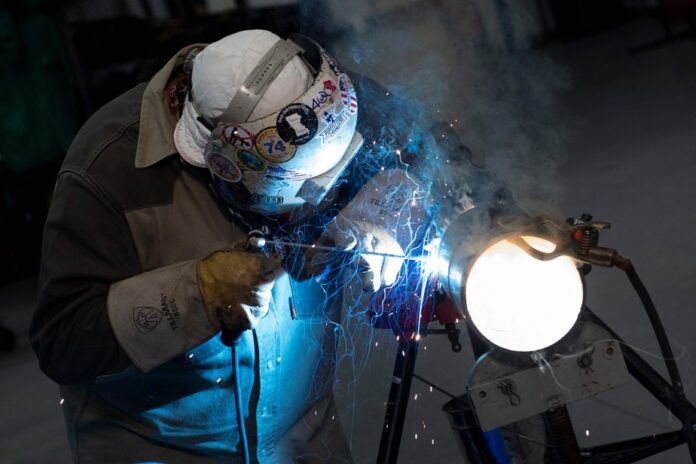(Washington) U.S. GDP growth defied pessimistic forecasts, and accelerated in the second quarter, driven in particular by consumer spending and rising investment. It looks like it could escape recession this year, but economists are divided.
In the three months from May to June, gross domestic product (GDP) growth was 2.4%, down from 2.0% in the first quarter, according to the Commerce Department’s first estimate, released Thursday.
Some analysts were expecting 2% growth, the same as the first quarter, according to MarketWatch consensus. Others were even anticipating a slowdown, to 1.6%, according to Briefing.com.
Simply comparing to the previous quarter, as other advanced economies do, growth is 0.6%.
It was driven in particular by consumption, its usual engine of growth, which however slowed down compared to the first quarter. American households spent more money on rent or health care, and bought more plane tickets.
Investments as well as state and local government spending also contributed to the growth, details the Commerce Department in its press release. On the other hand, real estate purchases fell, as did exports.
These developments take inflation into account, which means that growth is not due to rising prices.
Despite inflation on the one hand, and central bank rate hikes on the other, the world’s largest economy is surprisingly resilient.
GDP “has been stronger than expected,” Rubeela Farooqi, economist for High Frequency Economics, said in a note. And according to her, households “continue to benefit from positive employment growth and rising real incomes (which) should keep growth on a positive path this year.”
The recession, which seemed inevitable a few months ago, now even seems to be avoidable.
Federal Reserve (Fed) economists have just removed this risk from their economic forecasts, anticipating only “a significant slowdown in growth” at the end of the year, said Wednesday the president of the institution, Jerome Powell.
The International Monetary Fund (IMF) anticipates growth of 1.8% this year.
But other economists are more pessimistic.
“The economy is still avoiding recession this quarter,” notes Oren Klachkin, economist for Oxford Economics, who anticipates “a slowdown” in the 3rd quarter, then “slight contractions” in the 4th and 1st quarters.
“Consumer and business spending remains on track, but we think it’s only a matter of time before they feel the impact of high interest rates and tighter lending terms. “, he specified.
Growth is indeed suffering from the sharp rise in prices, which had reached a level not seen for more than 40 years, reducing the purchasing power of households, and therefore restricting consumption.
Inflation, however, fell in June to its lowest level since March 2021, at 3.00% year on year, according to the CPI index. Another measure, the PCE index, will be released on Friday.
To slow this rise in prices, the American central bank (Fed) has been raising its key rates since March 2022. As a result, banks offer loans at higher rates to households and businesses, which are less inclined to consume or invest, which which also weighs on the economy.
The Fed thus carried out an 11th hike on Wednesday, placing its main key rate in the range of 5.25 to 5.50%.
Its president, however, reported a “balance between the two risks. The risk of doing too much or not enough”, between inflation and recession, with “risks on both sides”.
In June alone, however, durable goods orders still rose sharply, thanks in particular to aircraft orders, according to data released Thursday by the Ministry of Commerce.
Unemployment is still very low, at 3.6% in June. And layoffs remain very low, as evidenced by weekly jobless claims, which fell in mid-July to their lowest level since February.
In 2022, the growth of the American economy had slowed to 2.1%, after having experienced in 2021 the strongest growth since 1984 (5.9%), and in 2020 the largest decline in GDP since 1946 (-3 .5%) and two months of recession due to COVID-19.















